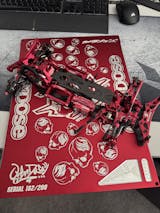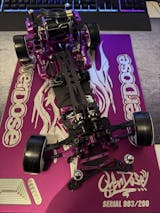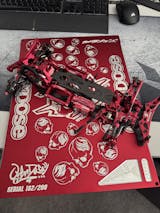When it comes to modern military aviation, few aircraft have earned as much reverence and respect as the F-16 Fighting Falcon. Among its various configurations, the C-Type stands out as a formidable and versatile platform that has demonstrated its prowess in both air-to-air combat and ground attack missions. In this blog post, we will delve into the F-16C, examining its history, design, capabilities, and significant contributions to airpower.
A Brief History of the F-16
The F-16 Fighting Falcon was developed by General Dynamics (now Lockheed Martin) in the 1970s as part of the U.S. Air Force's Lightweight Fighter program. The goal was to create an agile and cost-effective multi-role fighter capable of engaging enemy aircraft while also carrying out ground attack missions. The first flight of the F-16 occurred on January 20, 1974, and it was subsequently introduced into service in 1978.
The F-16C variant, which we focus on in this post, was introduced in the early 1980s as an advanced iteration of the original design. It incorporated improvements in avionics, weaponry, and overall airframe capabilities, making it a vital asset for U.S. and allied forces around the world.
Design and Features
The F-16C features a unique design that has become instantly recognizable. Its sleek, aerodynamic profile, coupled with a low-wing configuration and a single-engine design, not only enhances its agility but also contributes to its superior speed. Key design elements of the F-16C include:
1. **Avionics and Systems**: The F-16C is equipped with advanced avionics systems, including the AN/APG-68 radar, which enhances target detection and tracking capabilities. The fighter is also fitted with a digital fly-by-wire control system, which allows for exceptional maneuverability and stability during flight.
2. **Enhanced Weapons Capability**: The F-16C can carry a vast array of weapons, including precision-guided munitions, air-to-air missiles such as the AIM-120 AMRAAM and AIM-9 Sidewinder, and a variety of bombs for ground attack missions. This versatility allows the aircraft to engage multiple targets effectively, whether in the air or on the ground.
3. **Cockpit Design**: The cockpit of the F-16C is designed with pilot usability in mind. It features an advanced heads-up display (HUD) that provides crucial flight and targeting information without requiring the pilot to look down at instruments, enhancing situational awareness in combat scenarios.
4. **Multirole Capability**: While the F-16C excels in air superiority roles, it is also a capable ground-attack platform. This multirole capability means that a single squadron can fulfill various mission profiles, proving cost-effective and flexible for military planners.
Role in Military Operations
The F-16C has participated in numerous military operations worldwide, showcasing its adaptability and reliability. Some notable conflicts include:
1. **Desert Storm (1991)**: During the Gulf War, F-16C fighters played a crucial role in air superiority and precision strikes against Iraqi ground forces. Their ability to evade surface-to-air missiles and engage enemy targets with pinpoint accuracy made them invaluable during this conflict.
2. **NATO Operations**: The F-16C has been a key player in various NATO operations, including enforcement of the no-fly zone over Bosnia and Herzegovina in the 1990s and the air campaign against Serbia during the Kosovo War.
3. **Global War on Terror**: Following the events of September 11, 2001, F-16C fighters have been deployed to support operations in Afghanistan and Iraq, engaging in combat to protect coalition forces and civilian populations from insurgent attacks.
Global Reach and Adaptability
One of the most remarkable aspects of the F-16C is its global reach. The aircraft has been adopted by numerous nations and has been involved in joint training exercises and operations. Countries like Belgium, Denmark, Egypt, Israel, Jordan, and South Korea operate the F-16C, further solidifying its reputation as a versatile and reliable fighter aircraft.
Moreover, the F-16's modular design allows for continuous upgrades, ensuring that it remains relevant in the ever-evolving landscape of military aviation. Recent upgrades focus on improved avionics, sensor systems, and weapons capabilities, enhancing the F-16C's effectiveness in modern combat scenarios.
The Legacy of the F-16C Fighting Falcon
As the F-16C Fighting Falcon continues to serve, its legacy is cemented by the countless missions it has accomplished and the lives it has impacted. With its exceptional blend of speed, agility, and multirole capabilities, the F-16C has set a standard for fighter aircraft and remains a preferred choice for many air forces around the globe.
In conclusion, the F-16 Fighting Falcon, particularly in its C-Type configuration, represents a pinnacle of fighter jet design and operational effectiveness. Its ongoing evolution promises that it will remain a significant player in aerial combat for many years to come. As we look to the future of military aviation, the F-16C's enduring legacy serves as a testament to the innovation and resilience that defines airpower in the 21st century.
The F-16 Fighting Falcon (C-Type): A Legend in the Skies

















